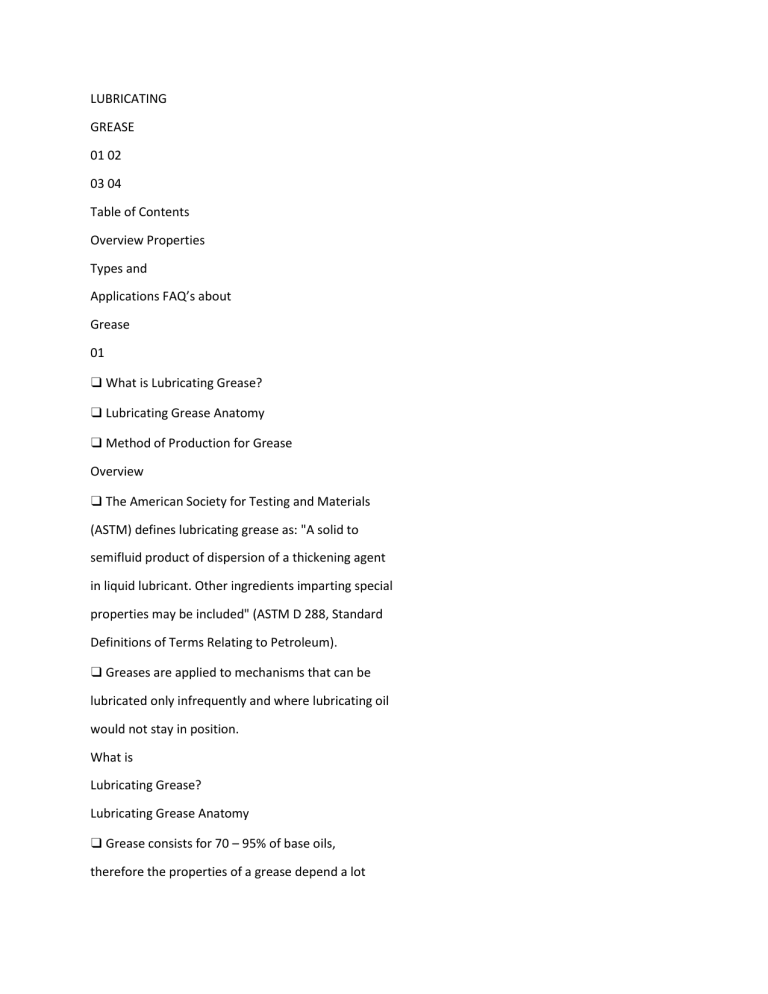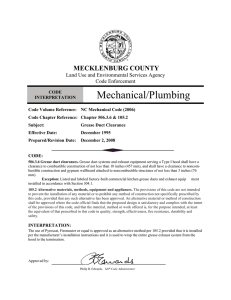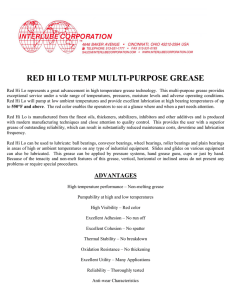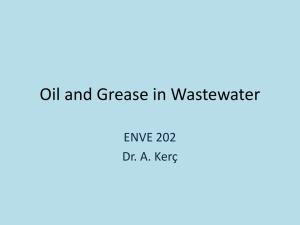
LUBRICATING GREASE 01 02 03 04 Table of Contents Overview Properties Types and Applications FAQ’s about Grease 01 ❑ What is Lubricating Grease? ❑ Lubricating Grease Anatomy ❑ Method of Production for Grease Overview ❑ The American Society for Testing and Materials (ASTM) defines lubricating grease as: "A solid to semifluid product of dispersion of a thickening agent in liquid lubricant. Other ingredients imparting special properties may be included" (ASTM D 288, Standard Definitions of Terms Relating to Petroleum). ❑ Greases are applied to mechanisms that can be lubricated only infrequently and where lubricating oil would not stay in position. What is Lubricating Grease? Lubricating Grease Anatomy ❑ Grease consists for 70 – 95% of base oils, therefore the properties of a grease depend a lot on the selected base oil to formulate the grease. Although mineral oils are far the most common used, synthetic oils are generally superior to mineral oils providing better oxidation stability, higher viscosity index and lower friction coefficient. Synthetic fluids are also used for extreme temperatures. Base Oils ❑ The thickener may be any material that, in combination with the base oil, will produce the solid to semi-fluid structure. Simply put, a grease thickener in combination with the base oil acts much the same way as a sponge holding water. ❑ The nature of the thickener is essential for the final product. Properties such as dropping point, mechanical stability, water resistance, lubricity, re-lubrication intervals, running temperatures and sealing properties can all be attributed to the thickener system. Thickeners Thickeners Grease Thickeners Soap Straight Li, Al, Ca, Na Mixed Li, Al, Ca, Na Complex Li, Al, Ca, Na, CAS Non Soap Inorganic Clay (Bentonite) Silica Organic Polyurea PTFE ❑ As in lubricating oil additives, grease additives and modifiers impart special properties or modify existing ones. Additives and modifiers commonly used in lubricating greases are oxidation or rust inhibitors, polymers, extreme pressure (EP) additives, anti-wear agents, lubricity or friction-reducing agents. ❑ In addition to these additives, boundary (thin-film condition) lubricants such as molybdenum disulfide (moly) or graphite may be suspended in the grease to reduce friction and wear without adverse chemical reactions to the metal surfaces during heavy loading and slow speeds. Additives Additives How is grease made? Methods of Production Open Kettle Process ❑ Open kettle manufacturing is probably the simplest, although not the most efficient, way to


